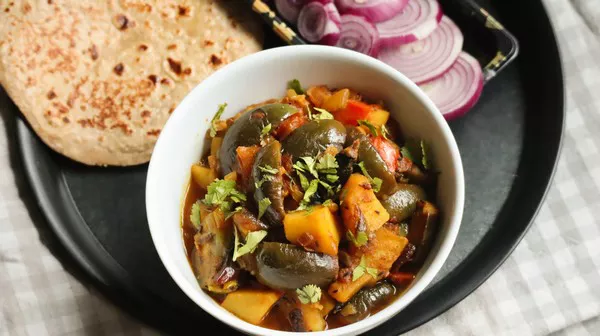Potatoes, a versatile and beloved staple in many cuisines, offer a myriad of culinary possibilities. From crispy fries to creamy mashed potatoes, their role in the kitchen is undeniable. But, when it comes to preserving these tuberous delights, questions arise: Can you refrigerate potatoes? How long do potatoes stay fresh in the refrigerator? Join us on a deep dive into the world of potato preservation, where we uncover the nuances of storing potatoes in the refrigerator, dispelling myths, and offering practical tips to extend their shelf life.
Understanding the Nature of Potatoes
Before delving into the intricacies of refrigeration, let’s grasp the basics of potatoes:
1. Potato Varieties:
From russet to red, fingerling to Yukon Gold, potatoes come in various varieties, each with its unique texture and flavor profile.
2. Nutritional Value:
Potatoes are rich in essential nutrients, including vitamin C, potassium, and dietary fiber. Their nutritional content makes them a wholesome addition to diverse meals.
3. Versatility in Cooking:
Potatoes serve as a blank canvas in the kitchen, adapting to various cooking methods such as boiling, roasting, frying, and mashing.
4. Storage Challenges:
Despite their culinary flexibility, potatoes require specific storage conditions to prevent sprouting, spoilage, and loss of quality.
Debunking the Refrigeration Dilemma: Can Potatoes Chill?
The question of whether potatoes can be refrigerated has been a subject of debate. Traditionally stored in cool, dark places, potatoes are known to sprout when exposed to light and fluctuating temperatures. However, refrigeration introduces a controlled environment that can potentially extend their freshness. Let’s explore the nuances of refrigerating potatoes:
1. Refrigeration Basics:
Refrigeration inhibits the sprouting process and slows down the conversion of starches to sugars in potatoes. This can be advantageous for certain potato varieties.
2. Ideal Temperature:
Potatoes thrive in cool, dark environments with consistent temperatures. The refrigerator, set at around 45°F (7°C), provides an optimal climate for preserving their texture and flavor.
3. Risks of Refrigeration:
Refrigerating raw potatoes can lead to the development of a sweet taste due to the conversion of starches into sugars. This phenomenon, known as cold-induced sweetening, is reversible upon returning the potatoes to room temperature.
4. Refrigeration Duration:
While refrigeration can extend the shelf life of potatoes, it’s essential to monitor the duration. Prolonged refrigeration may impact the texture and taste of certain varieties.
5. Cooked Potato Storage:
Cooked potatoes, whether mashed, roasted, or boiled, can be refrigerated for a certain period. Proper storage containers and temperature control are crucial to maintaining their quality.
Navigating the Potato Refrigeration Timeline: A Variety-Specific Approach
Different potato varieties exhibit varying responses to refrigeration. Understanding the characteristics of popular potato types empowers you to make informed decisions when it comes to storing them in the refrigerator:
1. Russet Potatoes:
High-starch russet potatoes are suitable for baking and frying. While refrigeration can extend their shelf life, it’s crucial to be mindful of cold-induced sweetening.
2. Yukon Gold Potatoes:
Yukon Gold potatoes, with their creamy texture, fare well in the refrigerator. Their thin skin and lower starch content contribute to a more favorable refrigeration experience.
3. Red Potatoes:
Red potatoes, known for their waxy texture, are less prone to cold-induced sweetening. Refrigeration can preserve their quality for an extended period.
4. Fingerling Potatoes:
Fingerling potatoes, celebrated for their unique shapes and flavors, can be refrigerated but are best enjoyed fresh for optimal taste and texture.
5. Sweet Potatoes:
Unlike regular potatoes, sweet potatoes should not be refrigerated. Instead, store them in a cool, dark place to prevent chilling injury and maintain their sweetness.
Mastering the Art of Potato Refrigeration: Practical Tips for Success
Preserving potatoes in the refrigerator requires more than simply placing them on a shelf. Implement these practical tips to maximize freshness and flavor:
1. Storage Containers:
Use breathable storage containers or perforated plastic bags to maintain optimal humidity levels for potatoes.
2. Dark Environment:
Keep potatoes in a dark environment to prevent the onset of green patches, which indicate the presence of solanine, a natural toxin.
3. Regular Monitoring:
Regularly check stored potatoes for signs of sprouting, soft spots, or mold. Remove any damaged potatoes to prevent the spread of spoilage.
4. Avoiding Moisture:
Moisture accelerates the sprouting and spoilage of potatoes. Ensure they are dry before placing them in the refrigerator.
5. Cooked Potato Storage:
When refrigerating cooked potatoes, allow them to cool to room temperature before placing them in airtight containers. Consume within a few days for optimal taste.
6. Rotation System:
Practice a “first in, first out” rotation system to use older potatoes before fresher ones, minimizing waste.
See Also: Can You Freeze Sweet Potatoes After Baking Them? Yes, Here’s How.
Conclusion
In conclusion, the decision to refrigerate potatoes depends on various factors, including the potato variety, intended use, and personal preferences. While refrigeration can extend the freshness of certain types, it’s essential to strike a balance to avoid compromising taste and texture. By embracing a variety-specific approach and implementing practical storage tips, you can unlock the full potential of potato preservation in the refrigerator. Whether you’re a culinary enthusiast or a home cook, this comprehensive guide equips you with the knowledge to make informed choices, ensuring your potatoes remain a delightful addition to your kitchen repertoire.


